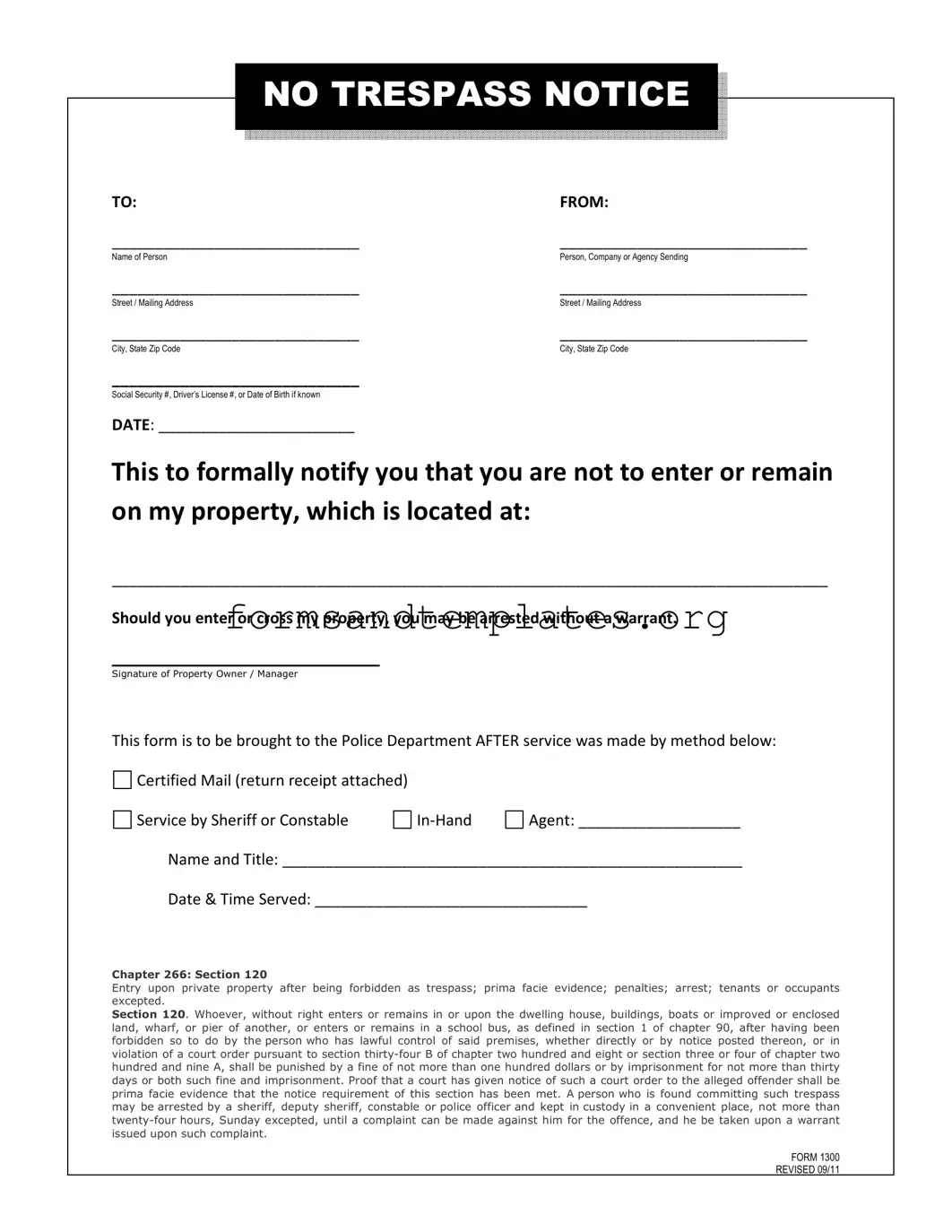What is a No Trespassing Letter?
A No Trespassing Letter is a formal document that notifies individuals that they are not allowed to enter or remain on a specific property. This letter serves as a clear warning and can be used to establish legal grounds for action if someone disregards the notice.
Why would someone need to use a No Trespassing Letter?
There are several reasons someone might choose to issue a No Trespassing Letter. Common situations include:
-
Protecting personal property from unwanted visitors.
-
Preventing harassment or intimidation by individuals.
-
Addressing ongoing disputes with neighbors or other parties.
How do I properly fill out a No Trespassing Letter?
To fill out a No Trespassing Letter, follow these steps:
-
Clearly identify yourself as the property owner.
-
Provide the name of the person you are addressing.
-
Include the specific address of the property in question.
-
State the date the letter is being issued.
-
Clearly express that the individual is not allowed to enter or remain on the property.
-
Specify the consequences of ignoring the letter, such as potential arrest.
How should I deliver the No Trespassing Letter?
Delivery of the No Trespassing Letter is crucial for it to be effective. You can deliver it in the following ways:
-
Certified Mail with return receipt requested.
-
In-person service by a Sheriff or Constable.
-
Hand delivery to the individual by an authorized agent.
What happens if the person ignores the No Trespassing Letter?
If the individual ignores the No Trespassing Letter and enters your property, you may have the right to take legal action. This could include calling law enforcement to report the trespass, which may lead to the individual being arrested without a warrant.
Is a No Trespassing Letter legally binding?
While a No Trespassing Letter itself is not a legal document in the traditional sense, it serves as a formal warning. If the recipient disregards the letter, it can support your case if you decide to pursue legal action for trespassing.
Can I use a No Trespassing Letter for commercial properties?
Yes, a No Trespassing Letter can be used for both residential and commercial properties. Business owners often use such letters to protect their premises from unauthorized access, theft, or vandalism.
What should I do if I receive a No Trespassing Letter?
If you receive a No Trespassing Letter, it is important to take it seriously. You should refrain from entering the property mentioned in the letter. If you believe the letter was issued in error or if you wish to dispute it, consider seeking legal advice to understand your options.

